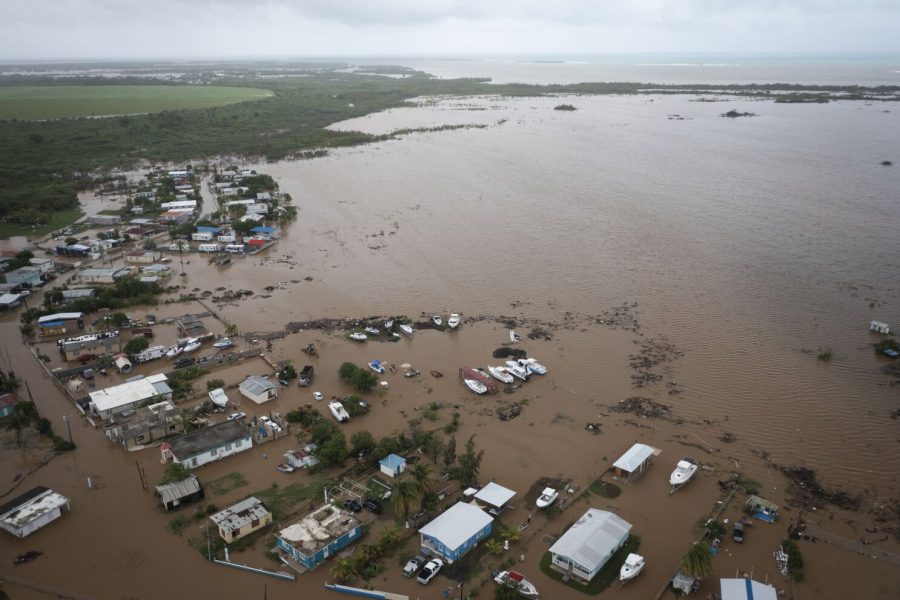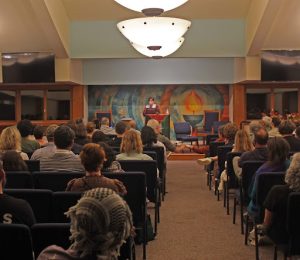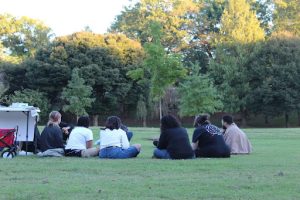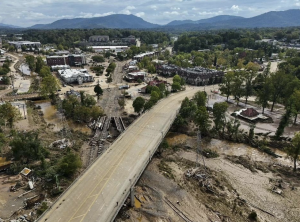Trouble in paradise: Hurricane Fiona’s aftermath
The hurricane devastated the Dominican Republic and Puerto Rico
Fiona’s storm surge floods areas of the Dominican Republic.
September 28, 2022
Five years after the devastation of Hurricane Maria, Puerto Rico and the Dominican Republic (DR) were forced to relive yet another catastrophic natural disaster. The forceful winds and incessant rain brought by Hurricane Fiona –- a Category 3 storm — swept into the western part of Puerto Rico on Sunday, Sept. 18 and continued on a disastrous route, reaching the easternmost portion of the DR on Monday.
The storm threw the entire island of Puerto Rico into disarray as mass power outages, flash-flooding and disrupted water supplies pushed the island into a state of complete darkness. For Puerto Rican communities already suffering from inefficient electricity grids and recurring blackouts, the impacts of Hurricane Fiona set back the recovery process, hurting the nation’s 5-year-old open wound. A lot of the infrastructure that took months to repair after Hurricane Maria has once again fallen apart, creating a sense of a never-ending game of snakes and ladders for the citizens of Puerto Rico.
As for the Dominican Republic, Hurricane Fiona targeted one of the country’s most economically precious regions, Punta Cana, which is home to more than 90 resort hotels. With high season (the most popular time of year) being just around the corner, there is a tremendous amount of pressure on these businesses to pull everything together in time to fulfill tourists’ expectations of tropical bliss, while locals remain submerged in the crude reality of flooded homes and scarce resources.
It is very easy for those of us who are not witnessing this event firsthand to read a few headlines and move on, believing that once the rain and wind cease, the worst part will be over. But in countries like Puerto Rico and the Dominican Republic, people seldom experience the proverbial “calm after the storm.” As soon as the rain clears, the real agony begins. During the never-ending hours of a hurricane’s passing, our fight-or-flight mind state is activated. We are fully present and concentrating on simply making it through, but that split second of relief we feel when the rain and wind finally come to a gradual halt is unfortunately short-lived. The returning sunlight spotlights the gloom, revealing everything that was lost.
Feeding into the idea of ‘seasonal depression,’ the hefty humidity, damp and sticky nights, bare trees and battered towns play a meaningful role in the process of recovery. This aesthetic of ruin is reflected in people’s lack of optimism. When faced with adversity, we are encouraged to persevere — but the process of recovery can feel excruciatingly long when government officials fail to allocate resources appropriately, extinguishing the hopes of those who were most deeply affected.
Natural disasters like these also worsen the socioeconomic gap, sinking the most vulnerable communities further into poverty. Underdeveloped communities that are settled among low land surrounding rivers suffer the frightening fate of violently swollen rivers. Families located in areas that are considered danger zones are rarely relocated when rivers take over their homes.
We are constantly reminded that material objects should not dictate our happiness, but this is only true when we don’t have to think about basic necessities like food, water, shelter and electricity.
A few months after Hurricane Maria in 2017, New York Times journalist Caitlin Dickerson visited a Puerto Rican suicide prevention center to shoot a short documentary film examining the emerging mental health crisis. Hurricane Maria left hundreds with nothing but despair amidst physical and economic disaster. After the unsettling effects of Hurricane Fiona, these traumatic events will undoubtedly repeat themselves in the wake of Hurricane Fiona.
So how do we help people cope with losing everything when they already have so little?
Many local organizations have started to raise awareness and come up with recovery strategies, inspiring a sense of community aid. Although this short-term support is necessary, we should follow the lead of Dickerson and dig deeper into the legacy that these hurricanes are leaving behind. Apart from improving the efficacy and preparedness of emergency services, there are further social implications that arise from catastrophes like these that should be taken into account. Our beautiful Caribbean islands won’t stop being attacked by hurricanes any time soon.













GabinoD • Oct 3, 2022 at 6:33 pm
Very helpful article keep up the hard work!